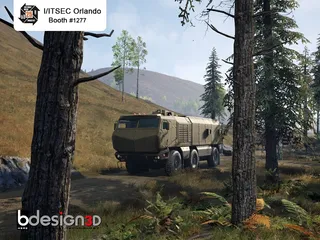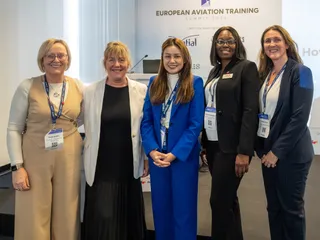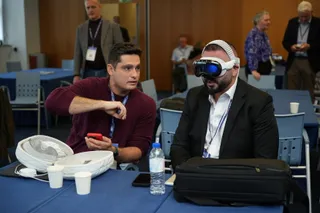This Is Just The Start - Cineon.Ai Unveils Groundbreaking Eye Tracking System at EATS 2025
Contact Our Team
For more information about how Halldale can add value to your marketing and promotional campaigns or to discuss event exhibitor and sponsorship opportunities, contact our team to find out more
The America's -
holly.foster@halldale.com
Rest of World -
jeremy@halldale.com
At EATS 2025, Cineon.Ai unveiled the UK's first CAA-approved VR system with integrated eye tracking, a training tool developed specifically to address the practical challenges of pilot walk-around inspections.
Cineon’s Training Aircrew Competencies using Eye Tracking (TACET) system was developed in partnership with Jet2 and tackles a persistent training headache.
Walk-around inspections are a mandated element of type rating, but they traditionally require airside access and a live aircraft. Cineon.Ai's VR platform replicates Boeing 737 and Airbus A321 aircraft with over 100 inspection points, allowing cadets to practise fault detection without needing to be on the apron.
What sets the technology apart is the eye-tracking capability. The system monitors where trainees are actually looking, differentiating between a brief glance and meaningful observation. That gives instructors objective data on inspection competency rather than relying solely on subjective assessment.
CEO Toby de Burgh argues the combination of VR and eye tracking provides measurable insights into gaze strategy, efficiency, and human factors such as workload and fatigue. The technology supports competency-based training (CBTA) and evidence-based training (EBT) approaches, providing the kind of granular data that traditional walk-around training simply cannot capture.
CAA approval is expected imminently, which would make this the first VR training system certified for UK use with eye-tracking capability. For training organisations struggling with aircraft availability and airside access, that regulatory endorsement matters.
The debut at EATS 2025 represents a genuine step forward for aviation training.
If Cineon.Ai's approach proves its worth in operational use, eye tracking could well become a standard feature across VR training platforms, bringing objective assessment to areas of pilot training that have long relied on instructor judgement alone.


